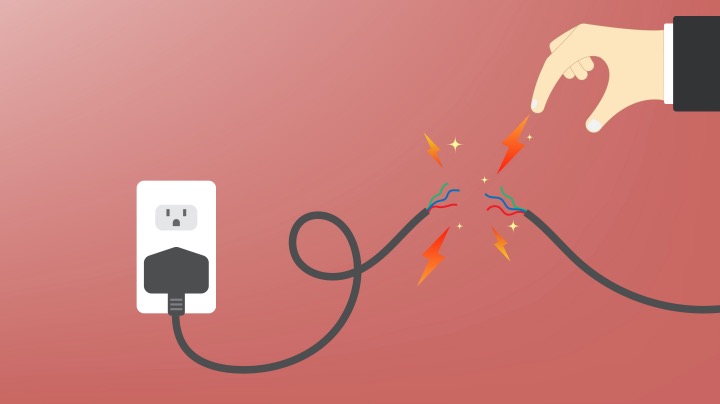Leading Tips for Effective Electrical System Troubleshooting
Fixing electric systems needs a methodical strategy, based in a thorough understanding of electric concepts and safety procedures. The subtleties of effective repairing expand past mere technological knowledge; understanding just how to document findings and focus on safety can considerably affect end results.
Understand the Basics
Recognizing the essentials of electric systems is vital for efficient troubleshooting, as a solid foundation enables service technicians to identify and resolve problems extra effectively. A comprehensive understanding of electric principles, such as voltage, current, resistance, and power, is crucial in recognizing the root creates of issues. Voltage is the electrical potential distinction that drives current through a circuit, while resistance opposes the flow of existing, affecting the total performance of the system.
Familiarity with circuit components, including resistors, capacitors, diodes, and switches over, is likewise paramount. Each element plays a distinctive duty in circuit behavior and can affect efficiency when malfunctioning. Additionally, understanding collection and parallel circuit arrangements is essential, as these setups affect the circulation of voltage and existing within the system.
Service technicians have to be conscious of possible hazards, such as shock and brief circuits, to implement secure troubleshooting techniques. By understanding these foundational ideas, technicians boost their capacity to perform efficient diagnostics and repair work, inevitably leading to improved performance and reliability of electric systems (electrical system troubleshooting).
Gather Necessary Devices
Reliable troubleshooting of electric systems calls for the appropriate collection of devices to detect and resolve concerns properly. A well-equipped service technician can significantly enhance performance and performance in identifying issues. Essential tools consist of a multimeter, which determines voltage, present, and resistance, enabling precise examinations of electrical parts. Secure meters are also beneficial for gauging present without disconnecting the circuit, making certain security and comfort.
Furthermore, insulated hand tools such as screwdrivers, pliers, and cable pole dancers are vital for securely manipulating electrical links. It is additionally a good idea to have a circuit tester available to validate the existence of voltage in electrical outlets and cables. For more facility systems, a thermal imaging cam can aid spot overheating parts, showing possible failures.

Adhere To a Systematic Method
Having gathered the suitable tools, the following step in fixing electrical systems is to follow an organized technique. A systematic approach guarantees that professionals can recognize faults effectively and accurately, minimizing downtime and avoiding unneeded repair services.
Begin by assessing the system's schematic click this link layouts and specifications. Recognizing the style and operational criteria will provide context for detecting issues. Next off, separate the trouble area by using a procedure of removal. This involves checking each part systematically, beginning with the power source and functioning towards the tons.
Utilize screening tools, such as multimeters and oscilloscopes, to collect objective data about voltage, current, and resistance at different factors within the system. This empirical evidence will guide your troubleshooting efforts and aid to validate or remove prospective sources of failure.
Furthermore, think about environmental aspects that may affect the system's efficiency, such as temperature level fluctuations or dampness ingress. A comprehensive examination of electrical wiring, connections, and parts will certainly make sure that all opportunities are represented.
Document Your Searchings For
Complete documentation is vital in the fixing procedure of electric systems. This practice not only aids in comprehending the origin reason of the trouble however also serves as a referral for future troubleshooting efforts.

Additionally, maintaining a log of parts changed or repair services executed is indispensable. This info sustains supply management and can assist analyze the durability and integrity of details parts.
Eventually, the documents procedure need to be complete yet concise, enabling very easy retrieval and testimonial - electrical system troubleshooting. By prioritizing detailed documents, technicians can produce an important knowledge base that not just help in present troubleshooting yet also encourages future upkeep initiatives, thus boosting general system dependability

Prioritize Precaution
Acknowledging the fundamental dangers associated with electric systems is essential for making sure security during troubleshooting. Electric shock, burns, and equipment damages are just a few of the possible dangers that service technicians face. Focusing on precaution is not just a legal obligation however also a moral imperative that safeguards both the professional and the surrounding atmosphere.
Before commencing any kind of troubleshooting job, specialists should put on proper individual safety devices (PPE), consisting of protected handwear covers, shatterproof glass, and flame-resistant clothes. Guaranteeing that the job location is dry and without mess can considerably decrease the threat of mishaps. It is vital to de-energize circuits before starting any type of job, validating that they are not live through the use of a multimeter or voltage tester.
Developing clear communication methods with staff member is also important; this makes sure that everyone is mindful of prospective hazards and the standing of the electrical system being dealt with. Having an emergency situation reaction plan in location can prove indispensable in the occasion of a case. By focusing on security procedures, specialists can properly mitigate dangers and foster a more secure work environment.
Verdict
Efficient electrical system troubleshooting relies upon a detailed understanding of essential concepts and a systematic approach. By collecting crucial devices, sticking to organized analysis methods, and carefully documenting findings, the fixing process ends up being visit this page much more effective and reputable. Prioritizing security procedures makes certain the health of people entailed and the honesty of the electrical system. Carrying out these approaches will enhance the repairing experience, bring about quicker resolutions and improved functional efficiency in electric systems.